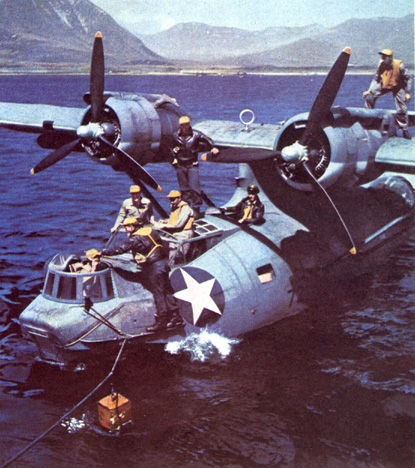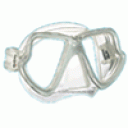 As a scuba diver, the most important pieces of equipment are those that make up the life support system.
As a scuba diver, the most important pieces of equipment are those that make up the life support system.
These include your regulator system (1st & 2nd stages, depth & pressure gauge & dive computer), buoyancy compensator device (BCD) and alternate air source (octo, octopus, occy). This equipment not only allows you to enjoy the underwater environment, it is also the only thing keeping you alive while you are there.
The people of this world come in a wide variety of shapes and sizes. Scuba equipment, unfortunately does not.
Lets focus on BCD’s. Once you have decided on a particular style based on your diving preferences, you will then need to find the correct size. Most manufacturers have size charts in their catalogs or on their websites to use as a general sizing references. If you don’t have a catalog, don’t worry, we have added all the size charts to our site when yo are looking at a product.
Sizing for BCD’s is usually based on height and weight and include ranges for each size category. Generally you can choose the size of a BCD based on your T-Shirt Size. If both your height and weight fall into one particular size, then you more than likely will wear that particular size. If you height falls into one size category and your weight falls in another, it would be safer to base your decision on the weight range rather than the height. Almost all BCD’s have user sizing adjustment straps which means that one size may fit a wider range of heights and weights. If your weight falls close to the heavier end of the range then it is safer to go with the larger size.
There are some factors that you need to take into account when determining sizing for BCDs. One of which is to take into account what you will be wearing with regards to an exposure protection. Will you be wearing a swim suit or a lycra skin? Will you be wearing a .5, 3, 5 or 7 millimeter wetsuit? How about a drysuit? You could put on each suit and then check the fit on each one but you would probably end up with heatstroke if you were to do that. The following guidelines will help you avoid this ordeal.
Loosen the shoulder adjustment straps, sternum strap and waist strap.
Put the BCD on wearing a t-shirt and adjust the cummerbund to fit snugly across the abdomen. The velcro on the cummerbund should overlap a minimum of two to three inches. (see photo 1).



Connect the waist strap buckle and tighten it to a comfortable fit. (see photo 2).
Connect the sternum strap buckle and tighten this so the shoulder straps are in a position where there is no chance for a shoulder strap to be able to slide off the shoulder. (see photo 3).
Tighten the shoulder straps last. (see photo 4).


When you look at all of the straps that you tightened, there should be at a minimum of 1-1 1/2 inches to 2-2 1/2 inches of excess stapping left over. The BCD overall should fit snug but with some room for a wetsuit or drysuit. Look in the mirror or have someone look to see if there are any gaps around the shoulder area. (see photo 5). If there are, like the picture, you should try on a smaller size. If the BCD does not have weight integration capabilities then you would also want to make sure that it is not hanging down in such a way that it would impede access to the weight belt release buckle.
What About Womens Scuba BCD’s
For years the scuba industry made BCD’s based on the male physique. They placated the female dive population by adding pink to a man’s small or extra small and calling it a women’s BCD. Women, traditionally, have a shorter torso length than men and for years had to deal with the shoulder gapping of the supposedly female BCD. The last 10 to 15 years brought dramatic changes to BCDs for women.
A Female BCD is unique in that it allows for more comfortable positioning along the bust area. Smaller busted women may prefer the straps to come over the front of the bust whereas larger busted women may want the straps to go along the sides of the bust. It is also a shorter torso length and is cut higher around the hip area so your BCD is not wrapped uncomfortably around the hips. For a safer and more enjoyable dive, women please purchase a BCD made by a women for women. And how should it fit? The same instructions as the mens bcd.

 The National Park Service is investigating the death of 40-year-old Michael Lawrence Anderson of Las Vegas, who died on a technical dive to the wreckage of a Navy PBY Catalina flying boat that crashed into Lake Mead in 1949. (Picture of a PBY Boat from Internet Left)
The National Park Service is investigating the death of 40-year-old Michael Lawrence Anderson of Las Vegas, who died on a technical dive to the wreckage of a Navy PBY Catalina flying boat that crashed into Lake Mead in 1949. (Picture of a PBY Boat from Internet Left) Well, I write this with a heavy hand as it has come to my attention that one of my favorite diving destinations is continuing to lose water depth. Yes that is right, the dive sites I used to know and love have pretty much disappeared. OK, I know the suspense is killing you. I am referring to Lake Mead in Las Vegas Nevada. Yep, I have cut my teeth here and now it is a completely different diving destination.
Well, I write this with a heavy hand as it has come to my attention that one of my favorite diving destinations is continuing to lose water depth. Yes that is right, the dive sites I used to know and love have pretty much disappeared. OK, I know the suspense is killing you. I am referring to Lake Mead in Las Vegas Nevada. Yep, I have cut my teeth here and now it is a completely different diving destination. As a scuba diver, the most important pieces of equipment are those that make up the life support system.
As a scuba diver, the most important pieces of equipment are those that make up the life support system.






 To choose a mask to fit properly you will first want to choose the proper mask style for your face size and special features, etc. Take a look at the “How do I choose the right dive or snorkel mask?” in our Gear Questions area.
To choose a mask to fit properly you will first want to choose the proper mask style for your face size and special features, etc. Take a look at the “How do I choose the right dive or snorkel mask?” in our Gear Questions area. Snorkels have changed allot but have always stayed in 3 basic categories.
Snorkels have changed allot but have always stayed in 3 basic categories. Guidelines for Proper Weighting. We all know that most new divers tend to need a bit more weight than seasoned ones because Buoyancy Control takes several dives to master. Common types of weights include pouchstyle with lead pellets (left) or solid lead style.
Guidelines for Proper Weighting. We all know that most new divers tend to need a bit more weight than seasoned ones because Buoyancy Control takes several dives to master. Common types of weights include pouchstyle with lead pellets (left) or solid lead style. 
